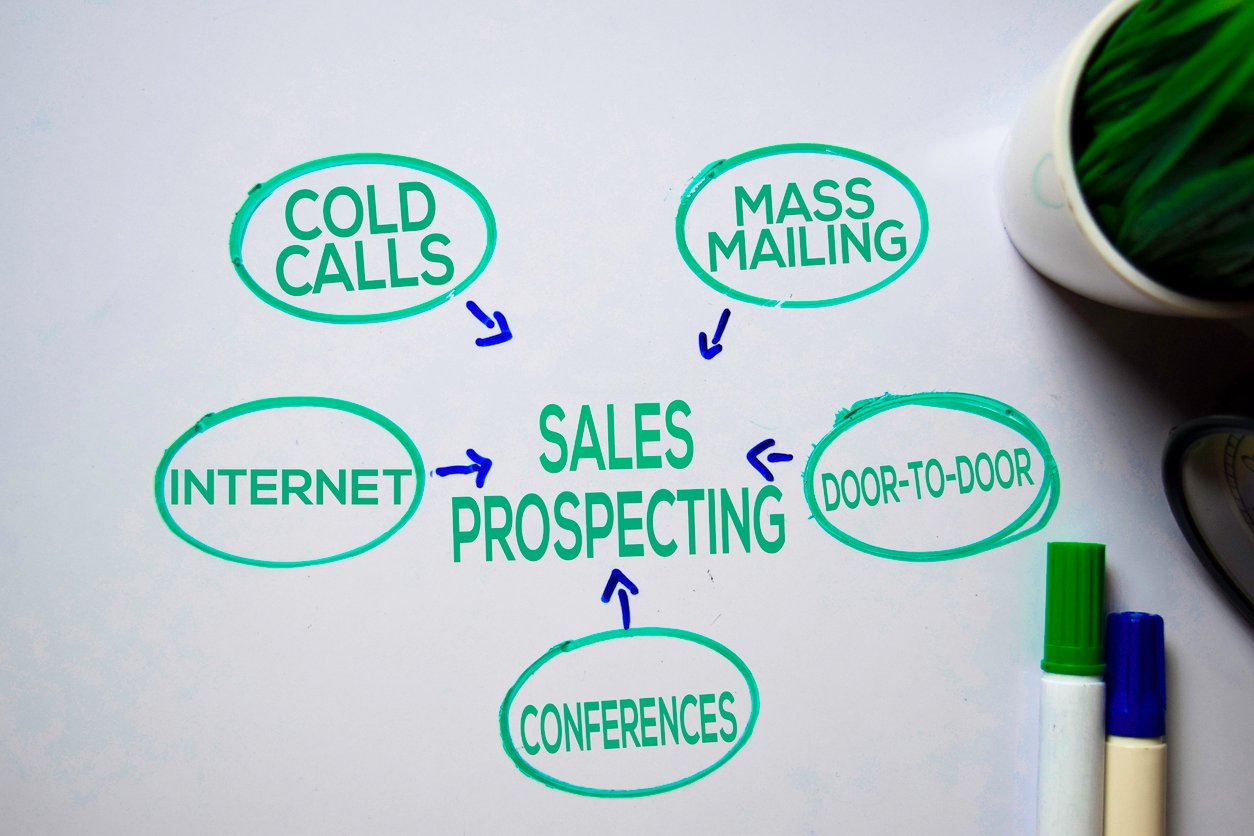
What Are the 4 Ps of Marketing? Complete Guide
 Updated on
Updated on
 By Carlos Correa
By Carlos Correa
Carlos Correa
Carlos has been involved in the sales space for well over ten years. He began in the insurance space as an individual sales agent, managing teams as s...
learn more
Carlos Correa
Carlos has been involved in the sales space for well over ten years. He began in the insurance space as an individual sales agent, managing teams as s...
Table of Contents
Table of Contents
It's easy to get lost in the noise of new social media trends and complex analytics, but what if the core of great marketing was much simpler? Spoiler: it is.
For decades, the engine running behind the most successful campaigns has been a powerful, straightforward concept: the 4 Ps of marketing.
The 4 Ps of marketing is a practical blueprint for taking a product from a simple idea to a customer's hands. This framework helps you answer the four most critical questions for any business. Get these elements right, and you create a strategy that clicks. Get them wrong, and... well, you get crickets.
Let's look at exactly how these four pillars work together to build a successful brand.
What Are the 4 Ps of Marketing?
The 4 Ps of marketing are Product, Price, Place, and Promotion, a framework for developing a successful marketing strategy.
They represent the core elements of the "marketing mix," first proposed by E. Jerome McCarthy in the 1960s. Businesses consider these four factors to make decisions about what to offer, how much to charge, where to sell it, and how to communicate its value to consumers.
You've probably also heard of variations like the 7 Ps of marketing (which adds People, Process, and Physical Evidence). While these additions are incredibly important, especially for service-based businesses, the original 4 Ps of the marketing mix remain the non-negotiable core. If you don't have these four elements figured out, the other three won't matter.
Let's break down exactly what are the 4 Ps of the marketing mix:
|
P |
Definition |
Key Focus Areas |
|
Product |
What you're selling. A tangible good, service, or digital solution that meets customer needs. |
|
|
Price |
The value customers are willing to exchange for your product or service. |
|
|
Place |
Where and how your product is made available to customers. |
|
|
Promotion |
How you communicate your product's value and persuade customers to buy. |
|
As you can see, understanding what are the 4 Ps of marketing is about mastering the art of creating value, communicating it effectively, and delivering it in a way that keeps customers coming back.
The 4 Ps of Marketing Mix: A Strategic Breakdown

The 4 Ps of the marketing mix are the foundational pillars that hold up any successful go-to-market strategy. Getting this mix right means getting the practical model for launching a product and ensuring it connects with an audience.
This framework helps you answer the four critical questions every business must face. Let's break down the 4 Ps of marketing definition piece by piece to see how they work together.
1. Product: The First P of the Marketing Mix
At its simplest, the Product represents what you're offering to the market, whether it's a physical item, a service, or a digital solution. But in the context of the 4 Ps of marketing, a product is more than just what you sell. It's the total experience you create for your customers.
Strong products solve real problems. They stand out because they deliver value that competitors can't easily replicate. This is where product development, branding, and differentiation come into play:
- Development & Quality: This is the baseline. Your product has to work, and it has to work well. This includes its features, reliability, and usability. In fact, 59% of consumers say that the quality of a product is the most important factor influencing their brand loyalty.
- Branding: This is the look, feel, and perceived identity of your product. It's the name, the logo, the packaging, and the unboxing experience. It's what makes your water bottle a "HydroFlask" and not just a container.
- Differentiation: In a crowded market, why should a customer choose you? Your product needs a unique selling proposition (USP). Is it faster? More sustainable? Easier to use? More affordable? This differentiation is your competitive edge.
A common mistake is to build something you think is cool without validating that your customer actually wants it. A successful product is one that a specific group of people finds valuable, useful, or desirable.
2. Price: Defining Perceived Value
"Price" is the only "P" that directly generates revenue, and it's one of the trickiest to get right. It involves more than just setting a price tag, and focuses on understanding the value your customers place on your solution and aligning your pricing with what they're genuinely willing to pay.
What "Price" really means in the 4 Ps of the marketing mix is a powerful signal of your brand's value.
Let's look at a few common pricing models businesses use:
Pricing Models: Businesses use various strategies to set their prices:
- Penetration: Setting a low initial price to quickly capture a large market share (e.g., a new streaming service).
- Skimming: Starting with a high price for early adopters (e.g., new tech gadgets) and lowering it over time.
- Freemium: Offering a basic version for free to upsell users to a paid "pro" version (common in SaaS).
- Premium: Setting a high price to signal luxury, quality, and exclusivity (e.g., a luxury car brand).
Psychological Pricing: Price is often emotional, not logical. Using $9.99 instead of $10.00 is a classic tactic, but this also includes "anchor pricing" (showing a "was" price) or bundling items to make the total price seem more valuable.
Here's an example: A SaaS company might use a tiered, freemium model. Their "Price" is based on access to features or the number of users. A food truck, however, uses a "cost-plus" strategy, where they calculate the cost of ingredients and labor and add a markup to ensure profit on every item sold.
A crucial part of your price strategy is transparency. Unexpected costs are the #1 reason for online cart abandonment. In fact, 39% of shoppers who abandoned a cart did so because of extra costs like shipping and taxes.
3. Place – The Often-Overlooked Distribution Channel
"Place" is the "where." This P answers the question, "Where and how will customers find and buy my product?" The 4 Ps of marketing place strategy is all about accessibility and convenience. If your product is great but hard to find, you've failed.
Place includes all distribution channels, from the factory to the customer's hands:
|
Distribution Type |
Description |
Example |
|
Physical |
Brick-and-mortar stores, pop-up shops, or showrooms that enhance in-person experiences. |
Apple retail stores |
|
Retail |
Partnerships with third-party retailers or wholesalers to expand reach. |
Walmart or Carrefour |
|
Digital |
E-commerce platforms, websites, and mobile apps for direct sales and global accessibility. |
Amazon, Shopify stores |
In 2025, your digital presence is your primary location. A slow, clunky website is the same as having a physical store with a broken door. With 73% of shoppers using multiple channels for a single purchase (e.g., researching online, buying in-store), your "Place" strategy must be seamless.
This is why "Buy Online, Pick Up In-Store" (BOPIS) is no longer a perk but an expectation, with the market expected to surpass €74.4 ($86.7) billion in 2025.
In other words, your "Place" is no longer just a physical location. It's every touchpoint where a customer can find, interact with, and purchase from your brand.
4. Promotion – Driving Awareness and Demand
"Promotion" is the "how." This is the "P" most people think of when they hear "marketing." It covers all the communication tactics you use to tell the world you exist and persuade people to buy.
Promotion is a strategic mix of activities:
- Traditional vs. Digital: Promotion includes old-school channels (TV ads, billboards, print) and, more importantly, digital channels.
- Digital Channels: This is a broad category, including social media marketing (organic and paid), content marketing (blogs, YouTube videos), influencer partnerships, search engine optimization (SEO), and Public Relations (PR).
- High-ROI Tactics: Some promotional activities, like email marketing, are known for massive returns, often averaging $36 for every $1 spent.
The most important part of promotion is your message. This is where storytelling and brand voice come in. Promotion involves building a connection. Are you witty and fun? Authoritative and trustworthy?
Your promotion is how you tell your brand's story and engage with your customers to build a community.
Adapting the 4 Ps of Digital Marketing Model for 2025

The 4 Ps of marketing are far from outdated, but their job description has definitely changed for 2025. In a digital-first environment, the lines between the Ps blur, and the customer is more in control than ever.
The 4 Ps of digital marketing aren't a new set of rules but a new interpretation of the original framework. The 'what, where, how, and how much' still matter, but their execution is entirely different.
Brands can no longer rely solely on conventional tactics and must now integrate data-driven insights, automation, and omnichannel strategies into each "P."
How the 4 Ps Shift in a Digital-First Environment
Let's look at how the classic 4 Ps of the marketing mix get a modern makeover for businesses that live online.
1. Product: From an Item to an Experience (UX)
In digital marketing, your product isn't just what you sell, but also the experience users have with it. A great SaaS platform or e-commerce store lives and dies by its usability, speed, and value delivery. For SaaS businesses like Ringy, the product extends beyond features and includes onboarding, interface design, and ongoing support.
Therefore, a strong digital product strategy focuses on:
- Seamless User Experience (UX): A clean, intuitive interface increases retention and reduces churn.
- Continuous Innovation: Regular updates based on customer feedback and analytics data.
- Brand Consistency: From your logo to your dashboard, every detail shapes perception.
Think of your website, mobile app, or software as the "storefront" of your product. A frictionless experience directly boosts customer satisfaction, and, by extension, conversions.
2. Price: From a One-Time Cost to Ongoing Access
In the 4 Ps of marketing mix, "Price" traditionally referred to how much something costs. Online, however, pricing has become more dynamic and customer-centric. Digital-first brands, especially SaaS and e-commerce companies, often use subscription, freemium, or usage-based models to lower the entry barrier and scale recurring revenue.
Here's how pricing evolves in digital marketing:
- Subscription Pricing: Platforms like Salesforce and HubSpot use tiered plans to match different business needs.
- Freemium Models: Letting users try before they buy is a major factor in software adoption.
- Dynamic Pricing: Retailers like Amazon adjust prices based on demand and competitor data in real time.
- Value-Based Pricing: Setting price points according to the measurable benefits customers receive.
In short, price is a statement of value and positioning that aligns closely with your overall sales and marketing strategy.
3. Place: From a Storefront to an Online Channel
The concept of Place in the 4 Ps of marketing used to mean shelf space and physical locations. Today, it's about digital distribution channels, anywhere customers interact with your brand online. For SaaS and e-commerce brands, this could mean your website, social media profiles, app stores, or partner integrations.
Modern digital "places" include:
- Your Website or App: The primary conversion hub and often the first brand impression.
- E-commerce Marketplaces: Amazon, Shopify, or niche B2B directories.
- Social Commerce: Selling directly through platforms like Instagram, TikTok, or Facebook Shops.
- Integrations and Partnerships: SaaS tools often distribute via ecosystems like Zapier or HubSpot's App Marketplace.
In a digital-first strategy, your distribution and visibility depend heavily on SEO, content marketing, and advertising reach. A strong presence across multiple online touchpoints supports faster customer acquisition.
4. Promotion: From a Broadcast to a Conversation (SEO/SEM)
Promotion remains the lifeblood of the 4 Ps of digital marketing, but it has evolved into something more measurable, interactive, and story-driven. Instead of one-way communication, brands now engage in two-way conversations powered by social media, content, and analytics.
Digital promotion thrives on:
- SEO and SEM: Ranking on search engines remains critical, with 68% of all online experiences beginning with Google.
- Content Marketing: Blogs, webinars, guides, and case studies that educate and nurture leads.
- Social Media and Influencer Marketing: Building trust through authentic engagement.
- Email and Automation: Personalized drip campaigns that guide prospects through the funnel.
- Performance Marketing: Using data to optimize ad spend and ROI.
A unified sales and marketing strategy connects these channels to drive awareness, nurture prospects, and close deals. For instance, a SaaS brand might attract leads through SEO, educate them via email sequences, and convert them through live demos, all under a consistent promotional umbrella.
Why the 4 Ps of Marketing Still Matter

It's easy to assume that a framework developed over half a century ago couldn't possibly keep up with the complexities of today's marketing demands. After all, we live in an age of automation, AI-driven personalization, and hyper-targeted ads.
Surely the 4 Ps of marketing belong in a textbook, right? Not quite. Despite new tools, channels, and customer behaviors, the 4 Ps remain one of the most adaptable and relevant strategic models in marketing today.
Here's why what are the 4 Ps of the marketing mix is still the first question you should ask.
Addressing the Criticisms
One of the biggest criticisms of the 4 Ps of marketing mix is that it's "too product-focused." Critics argue that it emphasizes what businesses want to sell rather than what customers actually need.
While that critique made sense decades ago, modern marketers have evolved the framework into a more customer-centric version, one that views each "P" through the lens of the buyer's experience.
A smart marketer in 2025 uses the 4 Ps as a customer-centric checklist:
- Product: Does this solve a real customer problem?
- Price: Does this align with the customer's perceived value?
- Place: Is this convenient for the customer to find and buy?
- Promotion: Are we communicating with the customer where they already are, in a voice they trust?
As you can see, "Product" now focuses on solutions, "Price" reflects value, "Place" represents accessibility, and "Promotion" centers on communication. This perspective aligns closely with the 4 Cs model, which includes Customer, Cost, Convenience, and Communication, which reframes the original Ps from the buyer's point of view.
The framework was never meant to be a one-way, "build-it-and-they-will-come" model. It's a tool to ensure your product and your customer are in perfect alignment.
The Framework's Flexibility
The reason the 4 Ps of marketing definition continues to work is its flexibility. It provides a timeless structure that can adapt to any business type, whether you're selling enterprise software, organic coffee, or a subscription-based e-learning platform.
Marketers still rely on it because it's a practical way to ensure every decision aligns with business goals and customer outcomes.
Here's how it continues to evolve in real-world strategies:
- Digital-first Marketing: The 4 Ps now extend into UX, marketing automation, and digital distribution channels.
- Service-Based Industries: Integration of the 7 Ps (adding People, Process, and Physical Evidence) gives more context for intangible offerings.
- Customer-Driven Strategies: Brands use data analytics to fine-tune each "P" based on customer behavior and feedback.
The framework's simplicity is its strength. It forces you to make decisions on the four most critical levers you can pull to influence your business's success.
Aligning with Customer Needs and the Modern Journey
The 4 Ps of marketing work because they revolve around understanding and serving customer needs, even if the language has evolved. Modern marketers now align each "P" with key stages of the customer journey or lifecycle marketing framework:
- Awareness (Promotion): Building visibility and educating prospects through ads, SEO, and social engagement.
- Consideration (Product + Price): Demonstrating value, differentiation, and pricing transparency.
- Decision (Place): Making the purchase process seamless, whether online or offline.
- Retention and Advocacy (All 4 Ps): Maintaining product quality, evolving offerings, and sustaining communication that nurtures loyalty.
Lifecycle marketing thrives when these four elements work together, ensuring customers don't just buy once but continue to engage with and advocate for your brand.
Integration with Newer Models
The 4 Ps don't exist in isolation anymore. Modern marketing strategies integrate them with frameworks that emphasize experience, data, and engagement. The 4 Cs of marketing, customer experience (CX), and flywheel models all build upon the foundation that the 4 Ps established.
For example:
- Product ↔ Customer: Focus on what the customer truly wants, not just what the company sells.
- Price ↔ Cost: Understand not only the price tag but the total cost to the customer (including time, effort, and perceived value).
- Place ↔ Convenience: Make your offering accessible across every channel and device.
- Promotion ↔ Communication: Shift from pushing messages to creating two-way conversations.
Together, these integrations help businesses maintain consistency across every touchpoint, something critical when 80% of customers say experience is as important as products or services themselves.
The Takeaway

For decades, the 4 Ps of marketing have been the foundational blueprint for any successful business, and that hasn't changed. They are the four essential questions you must answer to take any idea to market: What are you selling (Product)? How much is it (Price)? Where can people find it (Place)? And how will they learn about it (Promotion)?
As we've seen, this framework is more flexible than ever. In 2025, it adapts perfectly to the digital space, where your "Product" is your user experience, your "Price" is a subscription model, your "Place" is an online channel, and your "Promotion" is a data-driven, two-way conversation.
But knowing your marketing mix is only half the battle. You still need to execute it.
This is especially true for your "Promotion" strategy. You need a powerful way to manage the leads you generate, nurture those customer relationships, and communicate your product's value.
Once you've defined your 4 Ps of the marketing mix, you need a tool to manage the customer relationships that strategy creates. This is where Ringy CRM comes in.
Ringy is the all-in-one platform built to turn your "Promotion" P into profit. It helps your sales and marketing teams:
- Master Your Promotion: Consolidate leads from all your promotional channels (like web forms, social media ads, and landing pages) into one simple, automated pipeline.
- Dominate Your Digital "Place": Engage customers on the channels they actually use, with Ringy's powerful text (SMS) and email automation.
- Deliver Your Value (Product & Price): Nurture every lead with intelligent, automated follow-ups and a built-in VoIP softphone, ensuring no customer falls through the cracks and you maximize your customer lifetime value.
Don't just plan your marketing, power it. Schedule a demo to see how Ringy can help you execute your 4 Ps strategy and close more deals.

Skyrocket your sales with the CRM that does it all.
Calling? Check. SMS? Check. Automation and AI? Check. Effortlessly keep in touch with your customers and boost your revenue without limits.

Take your sales to new heights with Ringy.
Sales in a slump? Ringy gives you the tools and flexibility you need to capture leads, engage with them, and turn them into customers.
Subscribe to Our Blog
Enter your email to get the latest updates sent straight to your inbox!
Categories
Related Articles




































































































